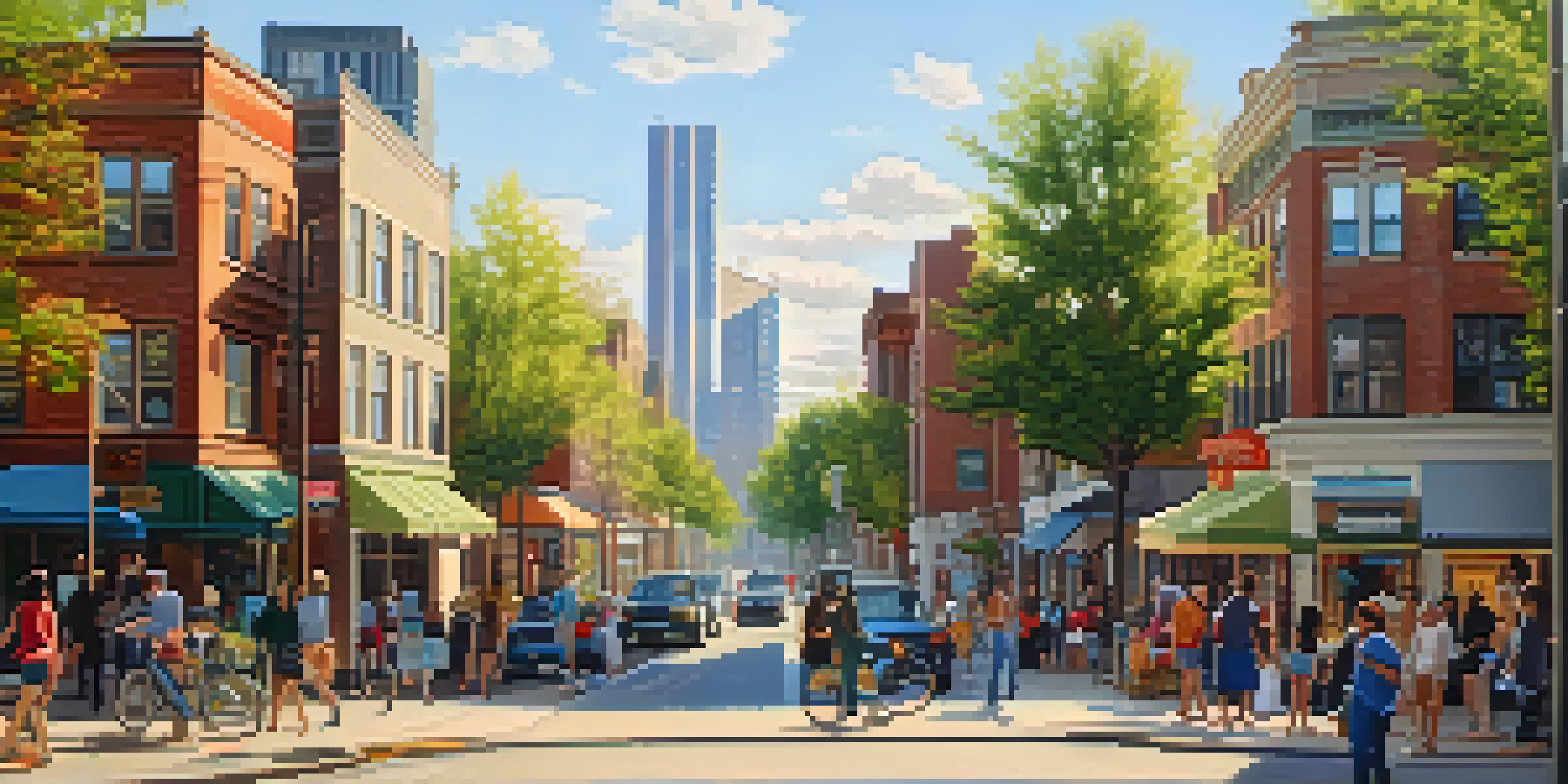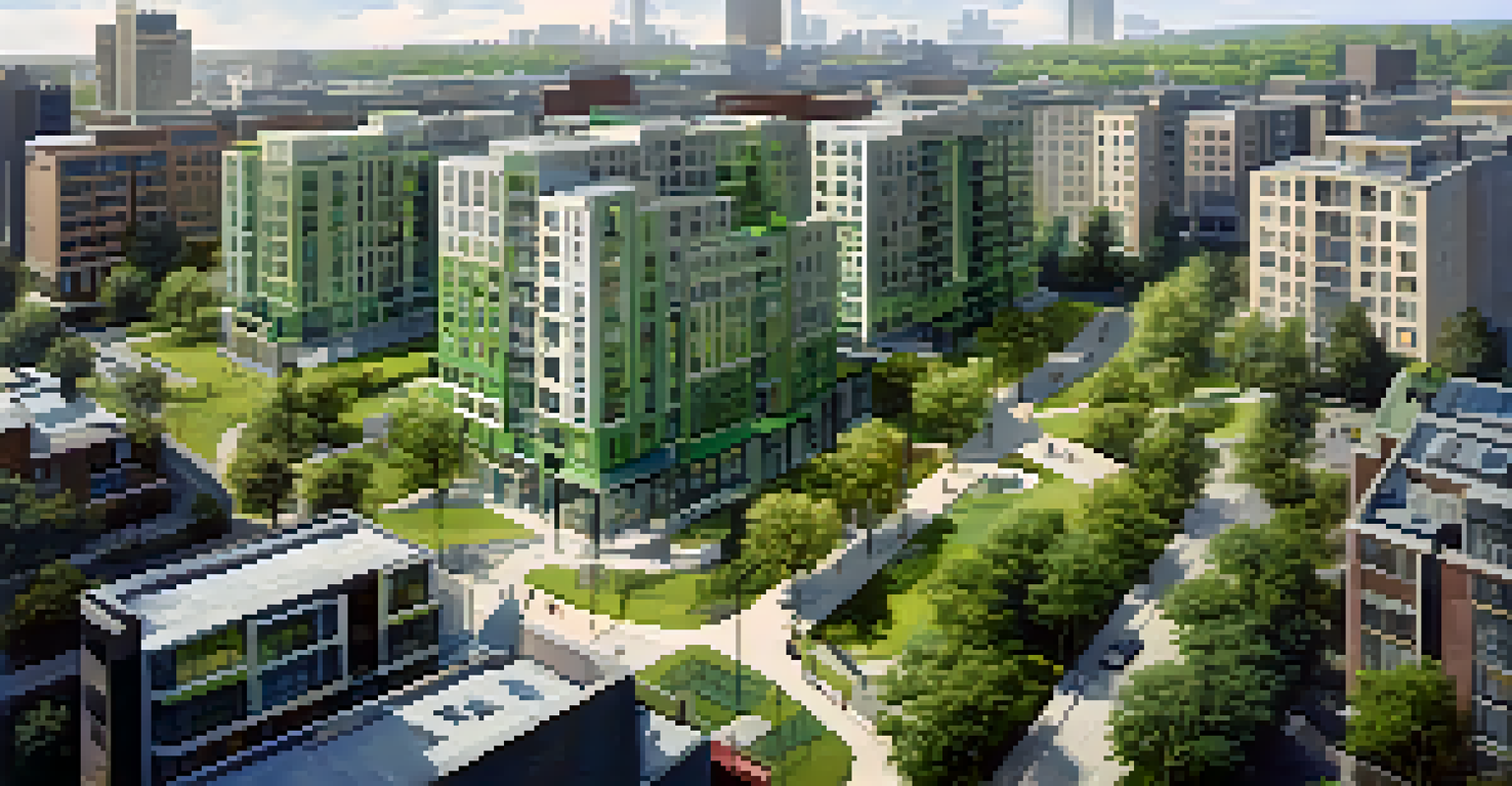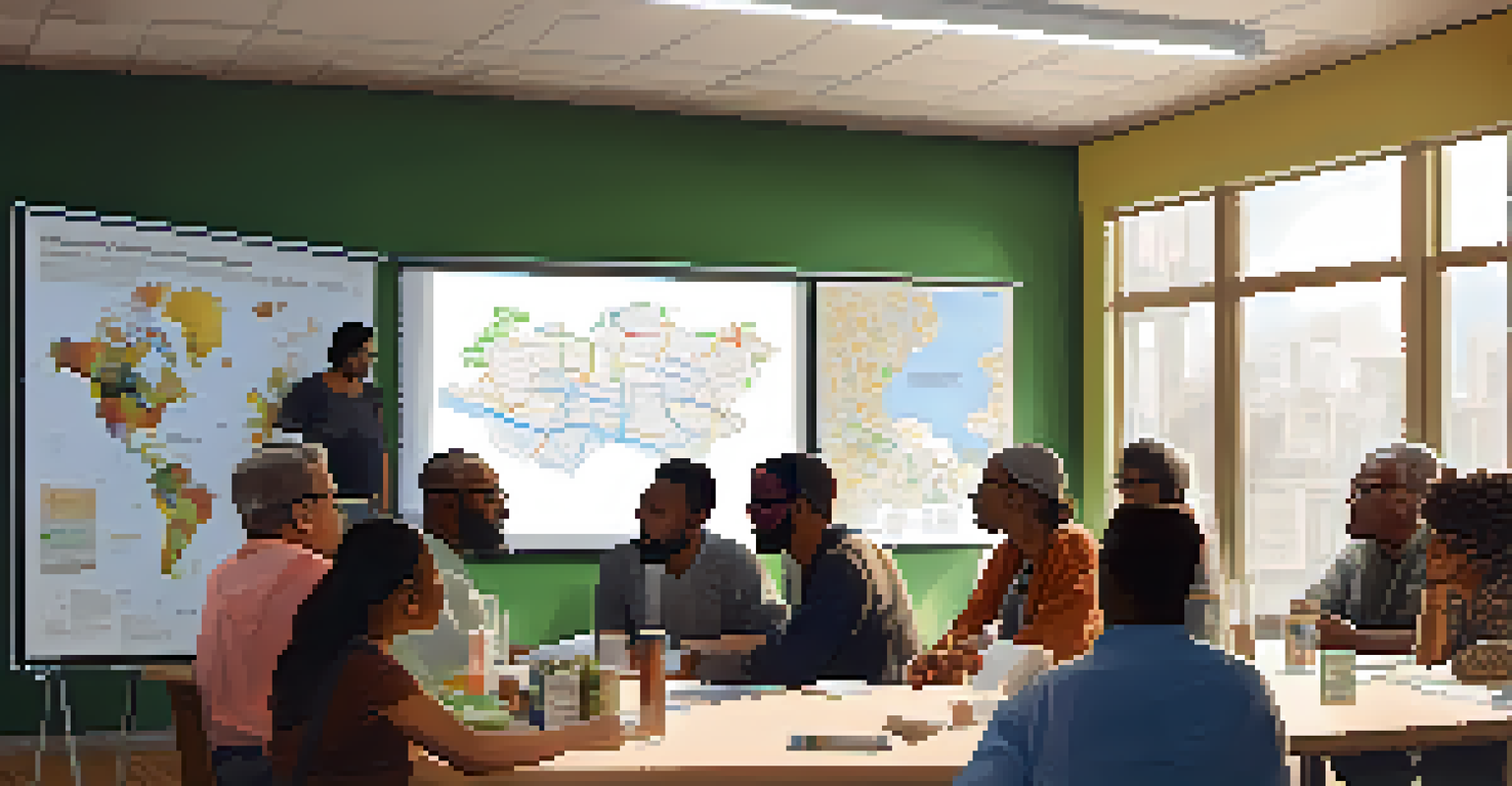The Role of Policy: Government's Part in Gentrification

Defining Gentrification: A Complex Urban Shift
Gentrification is a term that often stirs up strong feelings and debates. At its core, it refers to the transformation of neighborhoods as wealthier individuals move in, often displacing long-term residents. This process can lead to improved infrastructure and services, but it can also create tension and inequality. Understanding what gentrification means is crucial before we dive into how government policies influence this phenomenon.
Gentrification is not just about the people who move in, but also about the people who are pushed out.
Consider a once-vibrant neighborhood filled with local shops and diverse families. As new developments crop up, property values rise, and longtime residents may find themselves unable to afford the increasing costs of living. This scenario illustrates the dual nature of gentrification, where revitalization efforts can simultaneously uplift and uproot communities—all of which is significantly impacted by government interventions.
In this context, it's essential to recognize that gentrification is not simply a natural occurrence; it is often a product of deliberate policy decisions. By examining these policies, we can better understand how they contribute to the gentrification process and its varied consequences for the communities involved.
The Role of Zoning Laws in Urban Development
Zoning laws are one of the primary tools that governments use to manage land use in urban areas. These regulations dictate what types of buildings and businesses can occupy certain areas, effectively shaping the character of neighborhoods. When cities decide to rezone areas for mixed-use or higher-density developments, they can attract new investments and residents, leading to gentrification.

For example, a city might change zoning regulations to allow for high-rise apartments in a previously residential zone. This change can bring in more affluent residents and upscale businesses, but it can also push out local shops and lower-income families. The impact of such decisions can be profound, altering the neighborhood’s demographic and economic landscape in a relatively short time.
Gentrification's Dual Nature
Gentrification can enhance neighborhoods but often displaces long-term residents, highlighting the need for careful policy consideration.
While zoning is meant to promote orderly development and land use, it can also unintentionally fuel gentrification. Policymakers must carefully consider the long-term effects of these laws, balancing the need for growth with the rights and needs of existing residents to avoid exacerbating inequality.
Public Investment: Catalyst for Change
Government investment in public infrastructure is another significant factor in gentrification. When a city invests in parks, public transportation, or schools, it often draws in wealthier residents seeking a higher quality of life. These improvements can make neighborhoods more desirable, but they can also lead to increased property values and living costs.
The city should be a place where everyone has a seat at the table, not just the affluent.
Take the example of a new subway line being built in a historically lower-income neighborhood. While this can reduce commute times for residents and enhance the area’s appeal, it may also attract wealthier individuals who can afford to pay more for housing, pushing out the original residents over time. This scenario highlights the dual-edged sword of public investment.
Thus, while public investment can revitalize communities, it is crucial for policymakers to implement strategies that protect existing residents from being displaced. Ensuring that benefits of such investments are equitably distributed can help mitigate the adverse impacts of gentrification.
Affordable Housing Policies: A Double-Edged Sword
Affordable housing policies are designed to help low-income families find suitable housing, but their effectiveness can vary widely. When done right, these policies can prevent displacement and ensure that communities remain diverse and vibrant. However, poorly implemented policies can inadvertently contribute to gentrification by making neighborhoods trendy and desirable.
For instance, a city might introduce a program that encourages developers to include a certain percentage of affordable units in new projects. While this seems beneficial, if the overall development raises property values significantly, it may still result in the displacement of long-term residents who can no longer afford to live there.
Zoning Laws Shape Communities
Changes in zoning regulations can attract investments and affluent residents, leading to significant demographic shifts in urban areas.
It’s essential for governments to strike a balance in their affordable housing policies. By integrating community input and maintaining a focus on long-term sustainability, policymakers can help create environments where both new and existing residents can thrive together.
Economic Development Initiatives: Boost or Burden?
Economic development initiatives aim to stimulate local economies, but they can also trigger gentrification. These programs often focus on attracting businesses and investments, which can bring jobs and infrastructure improvements. However, they can also lead to rising costs that displace lower-income residents.
For example, a city might offer tax incentives to businesses that relocate to an underdeveloped area. While this can lead to job creation and revitalization, it may also attract wealthier residents and businesses, thereby driving up costs for existing residents and their businesses.
To navigate this complex dynamic, authorities must consider the needs of current residents when designing economic development initiatives. By prioritizing inclusive growth, cities can foster environments where both newcomers and long-standing community members benefit.
Community Engagement: A Key to Inclusive Policy
Community engagement is vital in crafting policies that address gentrification effectively. When residents have a voice in decision-making processes, they can advocate for their needs and priorities, helping to shape a more equitable urban landscape. This is especially important in neighborhoods experiencing rapid change.
For instance, holding public forums or workshops allows community members to express their concerns and suggestions directly to policymakers. This collaborative approach can lead to more thoughtful solutions that consider the unique characteristics of each neighborhood. Engaging residents fosters trust and ensures that policies reflect the community's needs.
Community Input is Crucial
Engaging residents in policy-making helps ensure that development benefits all community members and preserves the neighborhood's character.
Moreover, community engagement can also help mitigate the negative impacts of gentrification. By involving residents in the planning process, governments can create strategies that promote development while preserving the cultural and social fabric of the neighborhood.
Balancing Growth and Equity: A Policy Challenge
Finding the right balance between urban growth and equity is one of the most significant challenges facing policymakers today. As cities expand and evolve, the risk of gentrification and displacement becomes increasingly pronounced. Policymakers must navigate this delicate balance to foster sustainable communities.
For instance, creating mixed-income housing developments can help integrate diverse socioeconomic groups, but it requires careful planning and execution. If not managed well, these developments can still lead to tensions and displacements, undermining the original intent of promoting inclusivity.

Ultimately, the key lies in adopting a holistic approach that considers the needs of all residents. By prioritizing policies that promote both growth and equity, governments can help ensure that urban development benefits everyone, not just the affluent.